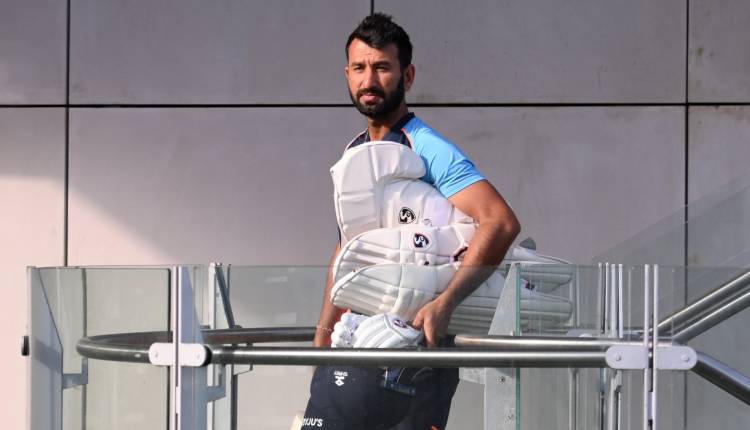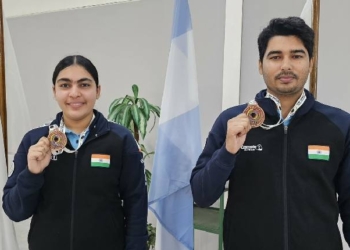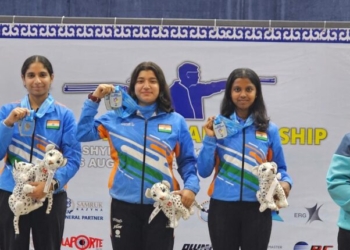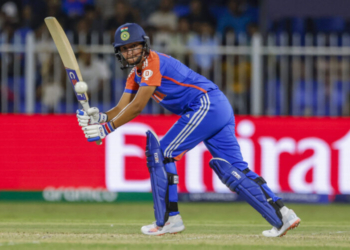New Delhi: In an era of all-format players, Cheteshwar Pujara has carved a niche for himself by being a mainstay in Test match cricket. Through his style of playing defensively and grinding down the bowlers before feasting on them by taking the attacking route, Pujara is one of his kind in the modern-day world of batsmanship.
Now, on the cusp of playing 100 Tests in the second Border-Gavaskar Trophy Test from Friday at the Arun Jaitley Stadium in New Delhi, Pujara admitted it has been a challenging ride for him to be a one-format player for India, adding that he had to motivate himself and be ready to get the runs for the team whenever Test matches happen.
“If we look at the current Test schedule, on average, we play nine Test matches. When you play one series and go back home, unless you play first-class cricket, you are not in touch with the game. Sometimes you are sitting at home and watching cricket on TV. That is the most important time for a Test cricketer to keep challenging himself, training and practising although you are not looking forward to any particular series in 1-2 months’ time.”
“When during Covid-19 time, when we didn’t have many first-class matches, it was the most challenging time as a cricketer as I was practising at home and was waiting for some Test matches to happen. For a Test cricketer, it is important to play first-class matches as it is challenging when you are a one-format player. But you need to motivate yourself and be prepared whenever Test matches are coming,” he said in the pre-match press conference.
Covid-19 meant that red-ball matches didn’t happen aplenty, leaving Pujara with limited game time. Though he was a key figure in the unforgettable 2-1 series triumph in Australia in 2020/21, including taking nine blows to score a courageous fifty in the series decider victory at The Gabba, Pujara was left out for the Tests against Sri Lanka at home last year.
With an urge to be back to his best in red-ball cricket, Pujara signed up for a County Championship stint with Sussex, amassing 1,094 runs in eight matches at a whopping average of 109.40 with five centuries against his name. That forced his comeback to the team for the rescheduled fifth Test at Birmingham and was Player of the Series in the 2-0 triumph over Bangladesh in December.
“It was challenging, but the best part was I was playing county cricket for Sussex. That’s when I started scoring runs and found my rhythm back. Regarding the shots I talked about, I had already spoken to Rahul (Dravid, head coach) bhai and Viki (Vikram Rathour, batting coach) paaji, and there were certain things I needed to work upon. Although I was left out of the team, I had clear communication on the certain things I need to work on.”
“The moment I started scoring runs, I knew I would be picked again. There’s an opportunity to represent the Indian team again and when I got the opportunity to play in the one-off Test against England, I was ready as I had played enough first-class matches for Sussex and scored enough runs, which gave me a lot of confidence,” added Pujara on regaining his touch in red-ball cricket.
Despite being the mainstay of the Indian team in the Test format, Pujara had his share of struggles. Like, the cloud of strike rate hovering over his shoulder, which resulted in him being left out of eleven during the 2015 series against Sri Lanka. He was eventually recalled for the third Test and quashed all the criticism by making a fine 145 as an opener.
Asked about his learnings as a batter in Test cricket since his debut in 2010, Pujara stressed on being mentally strong and adding shots to his armoury, which have facilitated his growth as a player in the longest format of the game.
“Yes, it is challenging. In the last few years, the most important part is, you need to be mentally strong. You need to believe in yourself and you should know your strength as a player. That’s something which I have backed throughout my career and has given me success. I knew that if I would get success in five-seven years because of what I have done, I can’t change my game.”
“You can always add a few shots into your game, but you can’t change your game entirely because there are other players who play white-ball cricket and their style of play is slightly different. So, one has to understand that each and every player has their own style.”
“The most important thing I have learnt in life is that one needs to stick to their strengths and back that. But as a cricketer, you always try to improve and that’s what I have done. I have added a few shots in my game which have helped me be successful in the last couple of years. So, you always need to add a few shots and continue growing as a cricketer,” he signed off.
(IANS)















